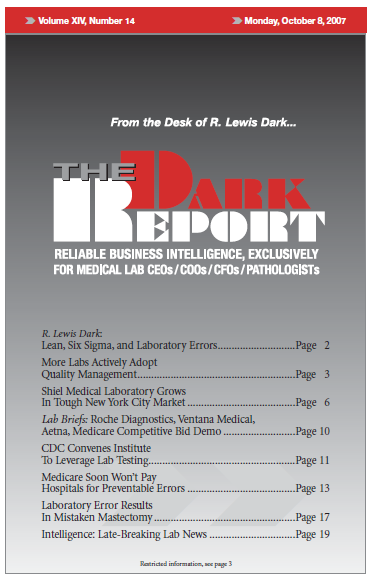CEO SUMMARY: In convening the 2007 Institute “Managing for Better Health,” in Atlanta last week, the Division of Laboratory Systems of the CDC invited a broad spectrum of healthcare experts and policymakers to participate. The ambitious goal was to facilitate discussions involving stakeholders such as employers, payers, policymakers, clinicians, and others to identify ways that …
CDC Convenes Institute To Leverage Lab Testing Read More »
To access this post, you must purchase The Dark Report.


